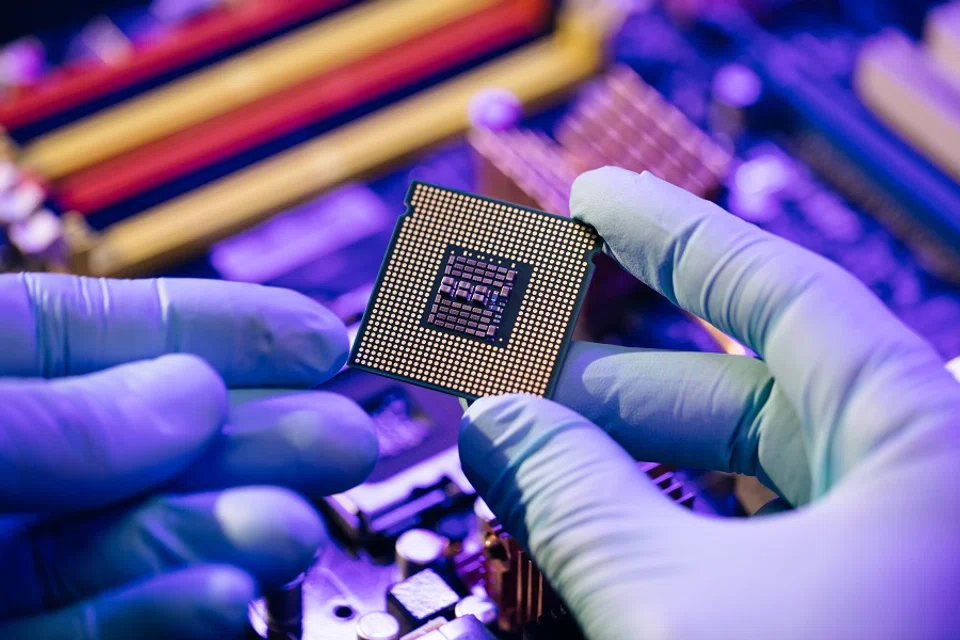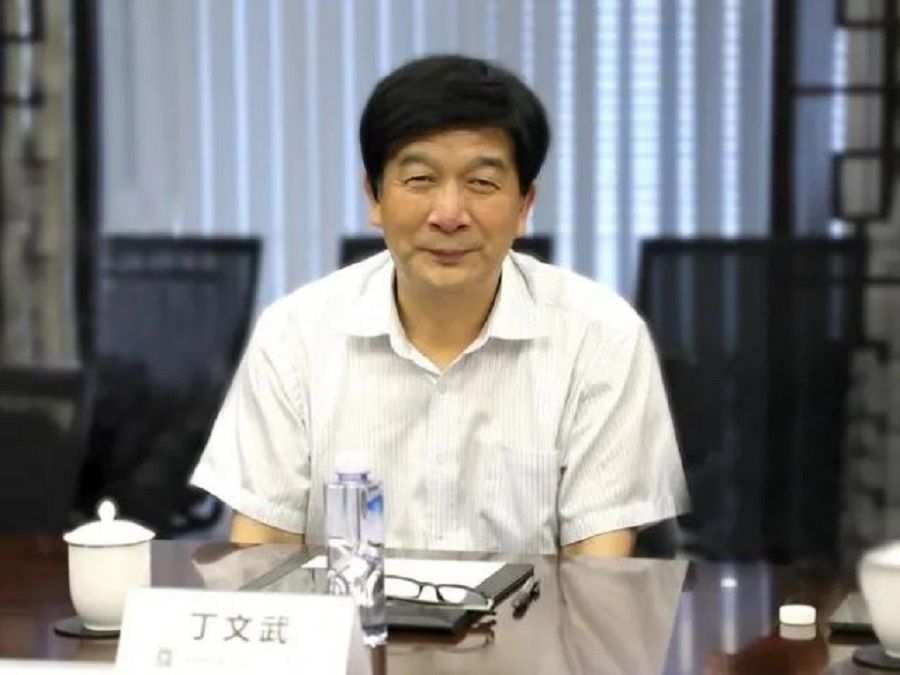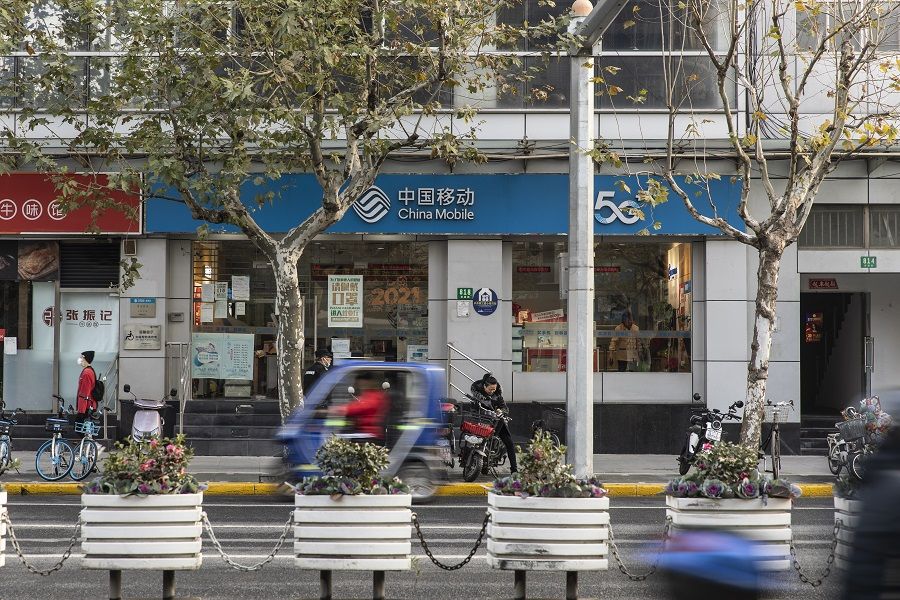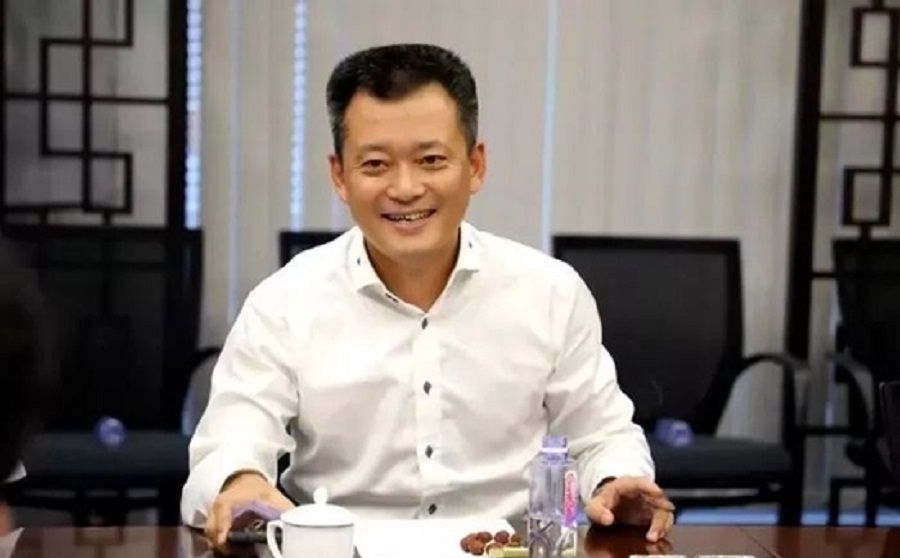Five things to know about China's scandal-struck chip industry 'Big Fund'

(By Caixin journalists Zhang Erchi, Qu Yunxu, Yu Ning, Qin Min, Zhai Shaohui and Han Wei)
China Integrated Circuit Industry Investment Fund, a key player in the country's quest for self-sufficiency in chipmaking, is at the centre of an expanding anti-graft crackdown that is rattling the entire semiconductor industry.
Since mid-July, China's graft buster has confirmed investigations of at least six current and former executives of the fund and its sole manager, Sino IC Capital Co. Ltd.
Those placed under investigation include Ding Wenwu, president of China Integrated Circuit Industry Investment Fund, and Lu Jun, who headed Sino IC Capital since its inception in 2014 to 2020.
Ding and Lu were key investment strategy decision-makers for the fund, known as the "Big Fund". Since its establishment, the fund has built up a sprawling portfolio through direct and indirect investments, backing the growth of industry leaders such as Semiconductor Manufacturing International Corp. (SMIC) and Hua Hong Semiconductor Ltd.
Industry experts said the Big Fund has played an indispensable role in cultivating China's domestic chipmaking industry by providing stable funding and state endorsements to fledgling businesses that struggled to access capital elsewhere.
But the recent corruption scandals have brought the Big Fund and its massive investment web under scrutiny.

The probes have ensnared several officials in the Big Fund's affiliated businesses and companies it invested in. They include Wang Wenzhong, partner of the subsidiary fund Shenzhen Hongtai Fund Investment Management Co. Ltd.; Du Yang, chairman of financial leasing company Sino IC Leasing Co.; and Zhao Weiguo, former chairman of the fund's biggest recipient, Tsinghua Unigroup Co. Ltd.
The snowballing investigation has sparked doubts about the fund's efficiency and future value. While some argued that the Big Fund has completed its mission and should bow off the stage, others said its past performance shouldn't be discredited and it still has a valuable role to play.
Here are some key facts to understand about the Big Fund and the ongoing anti-graft storm.
What is the Big Fund and why does it matter?
The Big Fund was a central part of Beijing's national blueprint for developing a homegrown semiconductor industry and came into being long before Washington's sanctions against Huawei Technologies Co. Ltd. and others. It was set up in 2014 with 130 billion RMB (US$20 billion) of capital from deep-pocketed state investors. The second phase of the fund raised 200 billion RMB in 2019.
In June 2014, the State Council published a roadmap to 2030 for the country's fledgling integrated circuit industry. The guideline first proposed a national industrial investment fund adopting market-oriented operations to attract capital from large companies, financial institutions and private investors to support the semiconductor industry.
The proposal was unprecedented. Previously, China's state support for the semiconductor industry was carried out mainly through national major technology projects. In a technology development plan launched in 2007, 16 major projects were identified for the following 15 years, including the development of advanced chips, homegrown CPUs and key chipmaking equipment such as lithography machines.
The fund adopted a two-tiered management structure in which the board set strategy and approved major projects while fund manager Sino IC Capital carried out investments and managed the money.

Since 2007, state funding support of the semiconductor industry increased from several million RMB a year to billions of RMB. But most of the funding went to scientific research, with little for industrial development.
In September 2014, several heavy hitters including China Tobacco, China Mobile and the China Development Bank (CDB) signed an agreement to establish the China Integrated Circuit Industry Investment Fund, marking the birth of the Big Fund.
The Ministry of Finance holds 36.74% as the fund's largest shareholder with a 36 billion RMB investment, followed by China Development Bank Capital's 22.29%. Other shareholders each has less than 12%.
The fund adopted a two-tiered management structure in which the board set strategy and approved major projects while fund manager Sino IC Capital carried out investments and managed the money. Sino IC Capital is 45% owned by CDB.
Sino IC Capital can make investment decisions on ordinary projects, while the fund's board has the final say on major projects, Ding told media in 2017.
How did the Big Fund deploy its money?
The Big Fund currently holds stakes in 34 publicly traded companies while operating as a fund of funds by investing in other semiconductor-focused investment institutions such as Oriza Holdings and SummitView Capital. It also holds a stake in the financial leasing company Sino IC Leasing, through which it provides debt financing for companies in need of quick support with liquidity.
With the Big Fund's support, many fledgling chip companies overcame an industrywide financial crunch between 2014 and 2015 and grew into leaders such as SMIC and Hua Hong.

When it was founded, the Big Fund set a principle of deploying at least 60% of its capital in chipmaking investments. According to GF Securities, the first round of 130 billion RMB was used up by September 2018, with 67% invested in chipmaking, 17% for design and the rest in packaging, testing, and material and equipment development, covering the entire industry chain. The Big Fund's investment and payback periods were both set at five years. Since 2019, the fund has started withdrawing from some of its first-phase projects.
With the Big Fund's support, many fledgling chip companies overcame an industrywide financial crunch between 2014 and 2015 and grew into leaders such as SMIC and Hua Hong.
The fund also invested in Yangtze Memory Technologies Corp. and ChangXin Memory Technologies Co. to fill a gap in DRAM memory production in China.
The top four of the 74 semiconductor companies traded on Shanghai's STAR Market were all backed by the Big Fund.
The Big Fund invested 79 billion RMB in 38 companies with its second-phase capital. Of that, 75% of the funds went to wafer fabrication projects, according to an April report by CSC Financial Co. Ltd.
What are the Big Fund's most recognised and controversial projects?
One of the most successful deals was the fund's 2014 investment in loss-making Advanced Micro-Fabrication Equipment Inc. (AMEC). With a US$80 million investment combining equity and debt, AMEC survived a financial crisis and debuted on the STAR Market in 2019.
But some high-profile chipmaking projects that won backing from the fund ran into problems, including Tsinghua Unigroup Co. Ltd., which recently completed a bankruptcy reorganisation leading to ownership change.
Shares of the micro-fabrication equipment maker, which has won customers at home and abroad, trade at 130 RMB apiece, compared with about 15 RMB paid by the fund.

The fund also backed Jiangsu Changjiang Electronics Tech Co. (JCET)'s 2014 acquisition of larger Singaporean rival STATS ChipPAC. The deal made JECT the third largest chip packaging company in the world.
"Without the Big Fund, JCET's acquisition would be very difficult because STATS was running at a loss, and the capital market was not enthusiastic," said Gu Wenjun, chief analyst at high-tech research platform ICwise.
But some high-profile chipmaking projects that won backing from the fund ran into problems, including Tsinghua Unigroup Co. Ltd., which recently completed a bankruptcy reorganisation leading to ownership change.
Unigroup was the biggest recipient of the fund's support, taking in at least 28.4 billion RMB from the fund's first phase. About 27.7 billion RMB of the funding went to Yangtze Memory, Unigroup's flash memory chip production unit, and 700 million RMB was invested in Unisoc, China's largest phone chip producer.
How did the Big Fund play a role as fund of funds?
The Big Fund is also an investor of many chip-focused investment funds, through which it leveraged a huge amount of non-state capital to invest in the industry.
The Big Fund invested in more than ten funds, including five in cooperation with local government-backed funds and three jointly established with leading industry players. Through these funds, the Big Fund indirectly invested in a large number of semiconductor enterprises including Ingenic Semiconductor Co. Ltd., GTA Semiconductor Co. Ltd. and ASR Microelectronics Co. Ltd.
When the second phase of the Big Fund was set up in 2018, the market hoped it would increase its role as a fund of funds. But the Big Fund eventually decided to stop investing in VC institutions.

According to a venture capital investor, given the huge size of the Big Fund, it is more suitable for it to focus on private equity investments rather than the earlier stage of venture capital (VC) investment. In the first phase, the Big Fund set aside about 10 billion RMB for investment in other VC funds to support promising startups that may become investment targets of the Big Fund when their businesses mature.
"It was very necessary at the time," the person said. Between 2008 and 2014, most of the VC funds in the market were not interested in the semiconductor industry. The indirect backing of the Big Fund became an important funding source for many start-ups, which later achieved sustainable growth and obtained further funding from the Big Fund, the person said.
When the second phase of the Big Fund was set up in 2018, the market hoped it would increase its role as a fund of funds. But the Big Fund eventually decided to stop investing in VC institutions.
Nevertheless, a number of market-oriented investment funds specialising in the semiconductor industry sprang up over the years with support from the Big Fund and are now attracting investment talent from the fund.
What's the role of Sino IC Leasing Co.?
The financial leasing company Sino IC Leasing has played a visible role in the Big Fund's investment strategies.
Sino IC Leasing was established in 2015 by investors led by the Big Fund. The fund held a 35.2% stake in the company with a 2 billion RMB investment. Lu Jun, then president of Sino IC Capital, was the first chairman of Sino IC Leasing.

One of the most important businesses of Sino IC Leasing at the beginning was to provide financial leasing services to fledgling SMIC, the second largest shareholder. The semiconductor giant currently holds 8.17% of Sino IC Leasing as the third major shareholder.
"Without Sino IC Leasing, SMIC would not achieve its financial performance after its IPO," a SMIC employee said.
SMIC has remained the largest client of Sino IC Leasing, which has provided lease financing to SMIC totalling US$1.8 billion, a person close to Sino IC Leasing said.
The closely coordinated business between the Big Fund and Sino IC Leasing is under scrutiny amid the recent graft crackdown on activities surrounding the fund.
The business goes as follows: Sino IC Leasing purchases equipment and leases it to SMIC, a deal that reduces the impact on SMIC's financials by a one-time investment in equipment and subsequent depreciation. After the leasing term ends, SMIC can choose to purchase the gear or extend the lease. Otherwise, Sino IC Leasing would lease the equipment to other clients. Sino IC Leasing achieved profitability in 2015.
Another company backed by the Big Fund, Yangtze Memory, is also a major client of Sino IC Leasing.

The closely coordinated business between the Big Fund and Sino IC Leasing is under scrutiny amid the recent graft crackdown on activities surrounding the fund. On Tuesday, the national graft buster announced an investigation of Du Yang, a former investment director of Sino IC Capital and current chairman of Sino IC Leasing.
As part of a probe of the Big Fund, state auditors launched a three-month audit of Sino IC Leasing in September, a person close to the matter told Caixin. The company has not been notified of any major audit issues, the person said.
In 2020, the Big Fund started selling part of its holdings in Sino IC Leasing to exit its first-phase investment. A 24.05% stake from the Big Fund was acquired separately by three local government-backed investment vehicles.
Meanwhile, a little-known private semiconductor company, Zhejiang Honghu, purchased a 13.89% stake in Sino IC Leasing from several smaller shareholders to become the largest shareholder. The Big Fund, with 6.66%, is the sixth biggest shareholder.
This article was first published by Caixin Global as "Five Things to Know About China's Scandal-Struck Chip Industry 'Big Fund'". Caixin Global is one of the most respected sources for macroeconomic, financial and business news and information about China.
Related: China's chip industry 'Big Fund' crackdown: Corruptions or failed investments? | Why no country can win the chip war | Why TSMC will stay rooted in Taiwan despite pressure to set up overseas chip factories | China's 5G ambitions undiminished by pandemic and sanctions | Chinese tech companies in chipmaking race to be self-reliant | Chinese companies drawn to chip-making like bees to honey | China's whole-of-nation push for technological innovation
